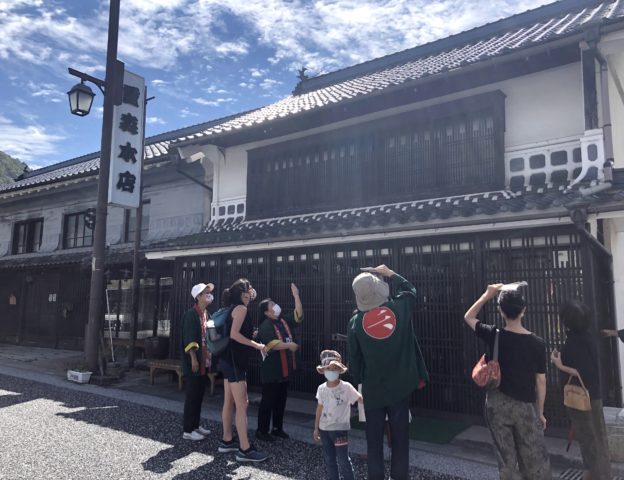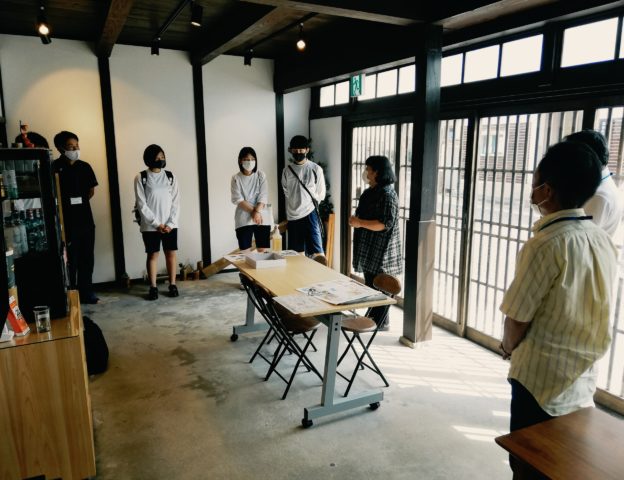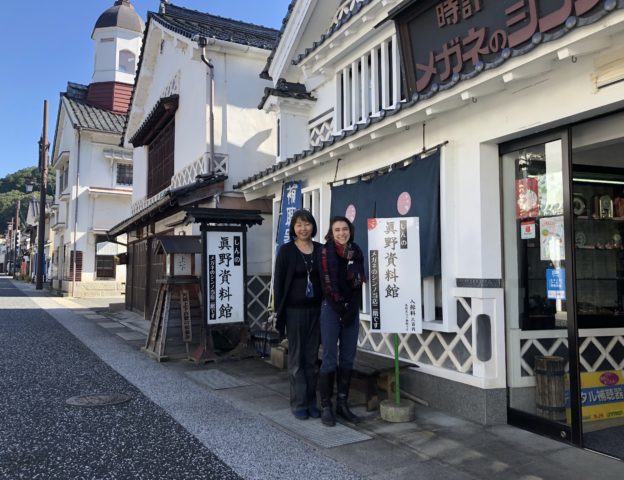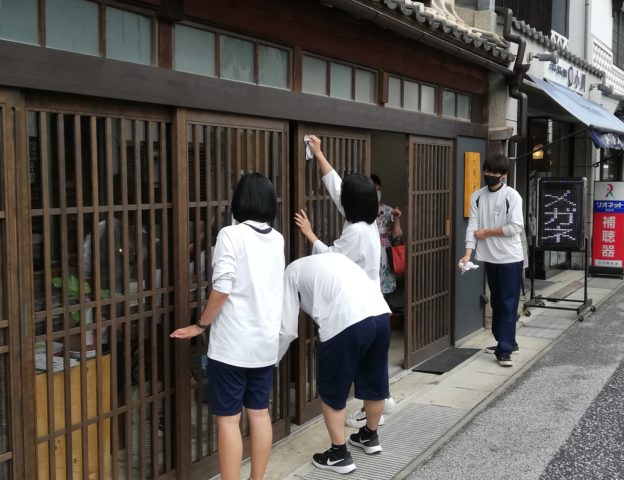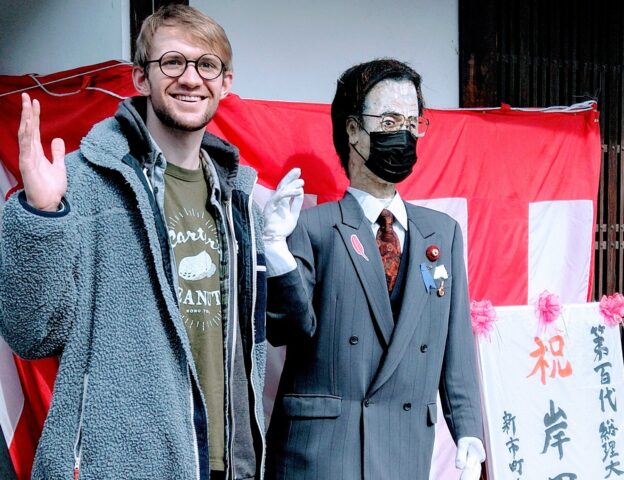Hinamatsuri at Joge Gallery & Suehiro Sake Brewery Museum
Hello there everyone! This is Mary, back with another entry in my JOGE blog series. Joge is a small town in northern Hiroshima where the charm of traditional Japanese lifestyle, architecture, and hospitality abounds. It is my hope that by writing English content about Joge, many people will come to know and love this town like I do.
Spring is on its way, and with it, Japan’s Hinamatsuri Festival! Hinamatsuri, also known as Girl’s Day, is held on March 3rd to celebrate female children and pray for their continued health and happiness. On this day, Japanese families display ceramic ornamental Hina dolls in their homes, representing the ancient imperial court.

Instead of celebrating Hinamatsuri on only March 3rd, Joge spends an entire month, from February to March, displaying dolls, hosting events, and enjoying traditional festival activities. On an average year, people flock to Joge from all over the prefecture to attend, making Hinamatsuri Joge’s busiest time of year. Due to the influence of COVID19, this year’s festival will be held on a much smaller scale, with locals displaying their own private Hina doll collections.
Of all the Hina doll collections in Joge, those exhibited at Joge Gallery and the Suehiro Sake Brewery Museum are the most elaborate. Since I was unable to visit Joge in person this month, I enlisted the help of a friend of mine to interview the owners of these two establishments, Mrs. Shigemori and Mrs. Suehiro, about their sizeable collections.
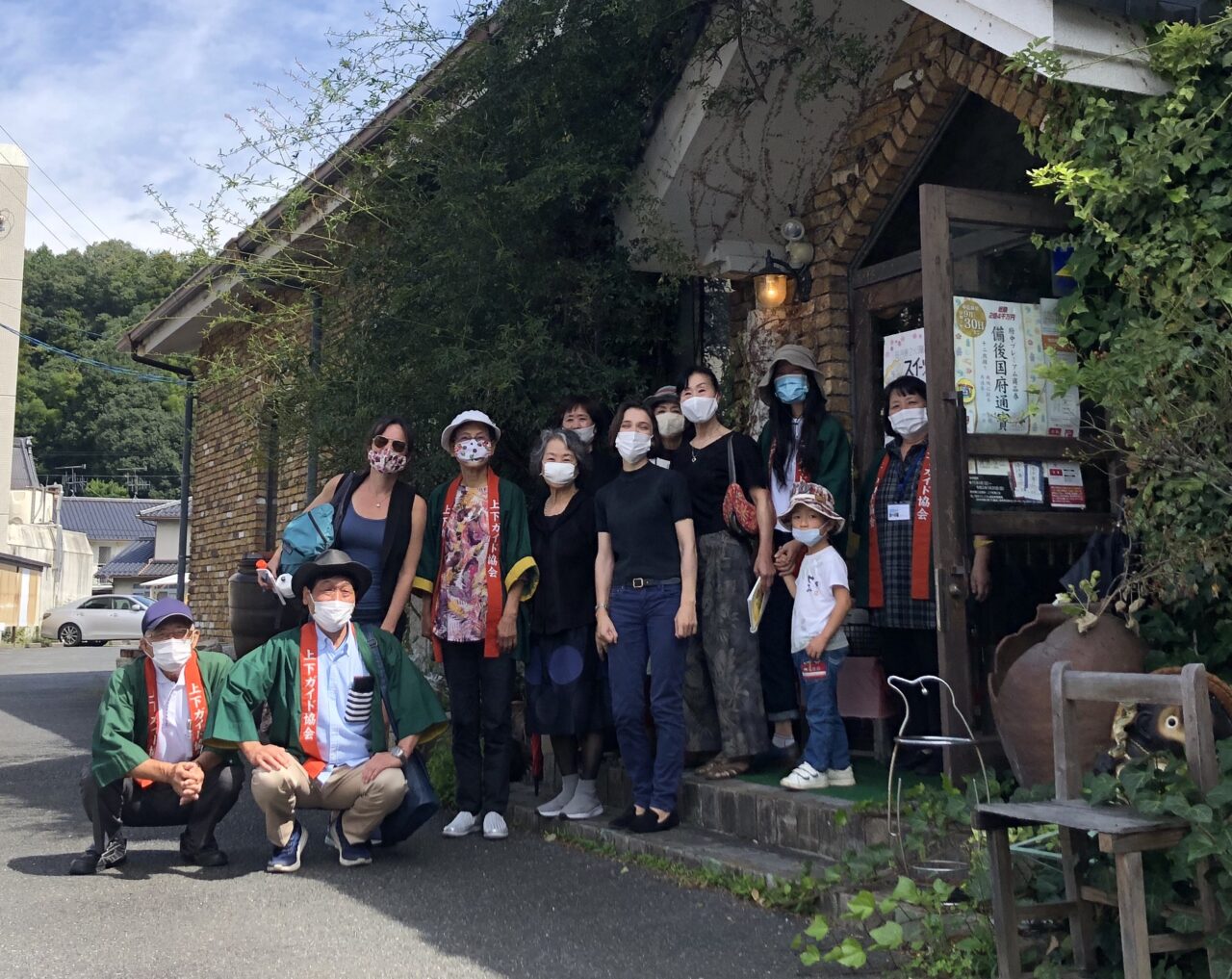
Joge Gallery is a charming café and antique shop on Joge’s main street. The owner, Mrs. Shigemori, one of my former English students, is very friendly, and loves to barter in English! Here is a photo of me and some friends visiting Mrs. Shigemori at Joge Gallery last summer.
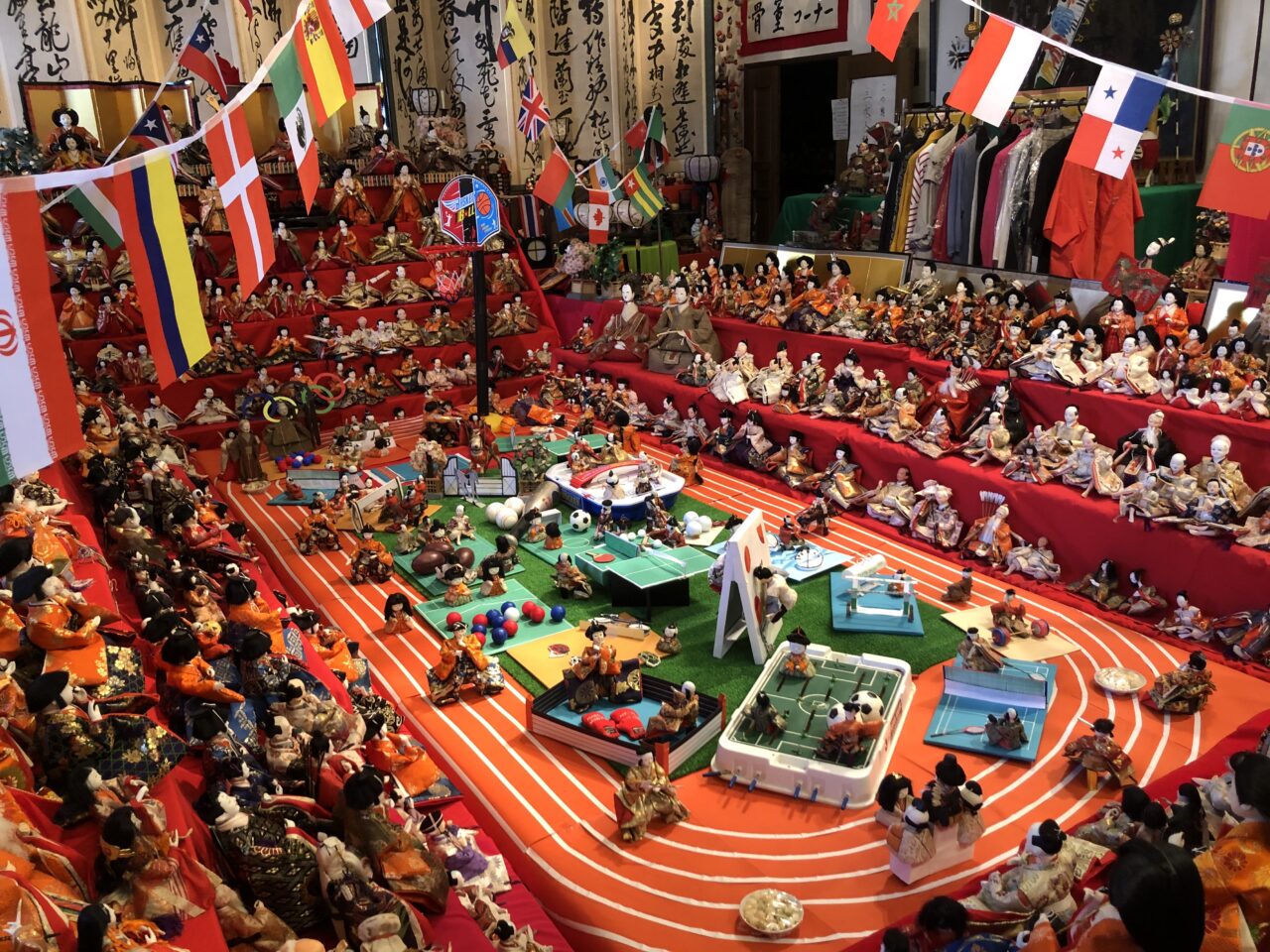
During Hinamatsuri season, Joge Gallery is home to a massive display of over 2000 Hina dolls. This year, Mrs. Shigemori and her friends arranged the Hina dolls in an Olympics-themed diorama to celebrate the arrival of the Tokyo Olympics. The dolls are running track and field, boxing, bouldering, playing boccia, more! All of the props on the diorama were meticulously hand-made.
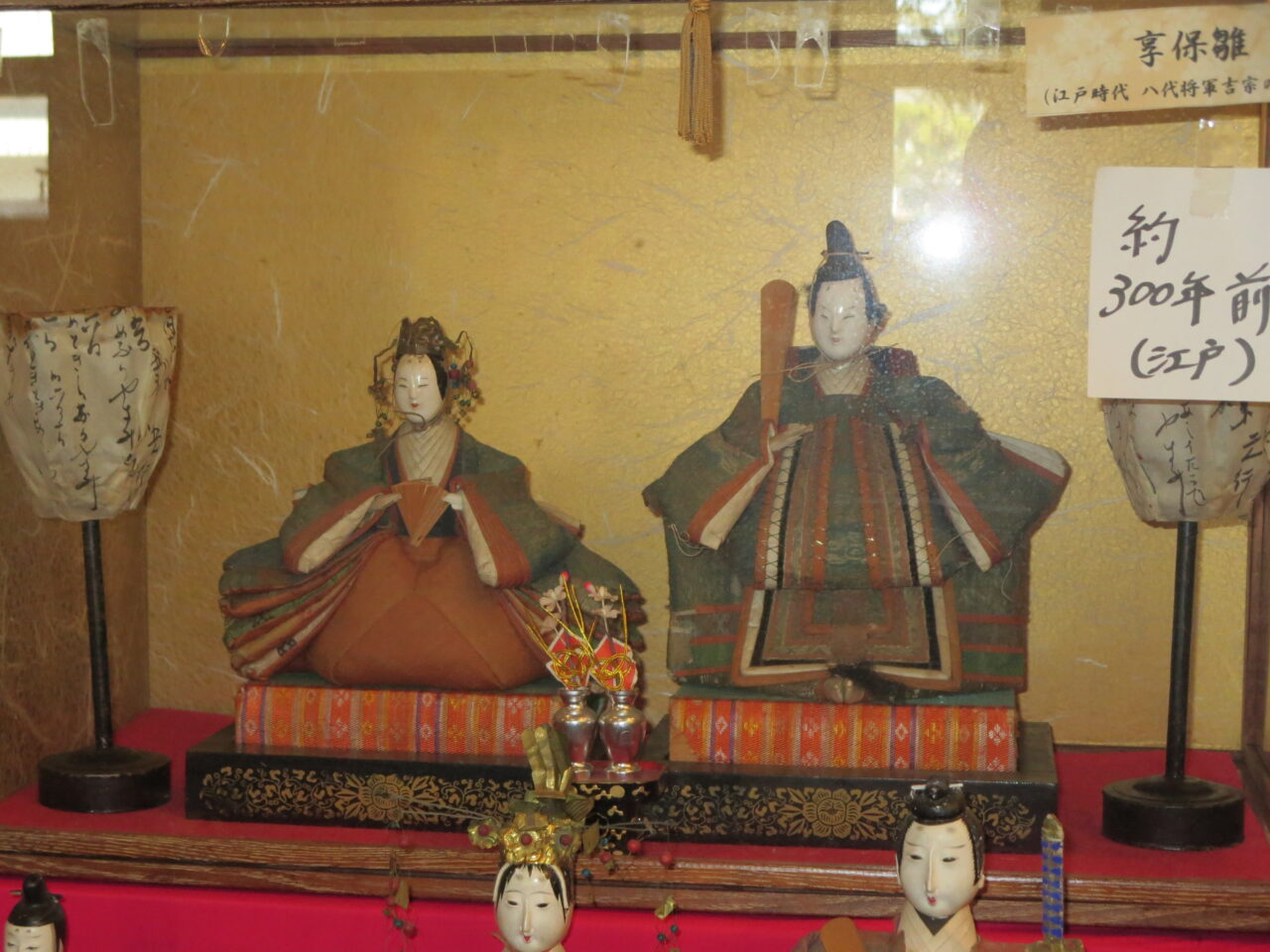
Joge Gallery also exhibits older Edo-era Hina dolls, status symbols of high quality that only the wealthy could afford. These dolls sport kimono with 12 linings, have long faces resembling the Heian aristocracy, and are stuffed with fine cotton.
After the Meiji era, Hina dolls became more popular with common people, leading to their mass production. Unlike the Edo-era dolls, they wore more casual kimonos, had folksy faces, and were stuffed with cheaper materials like sawdust. As a result, Hina dolls made after the Meiji era are now fragile and damage-prone.
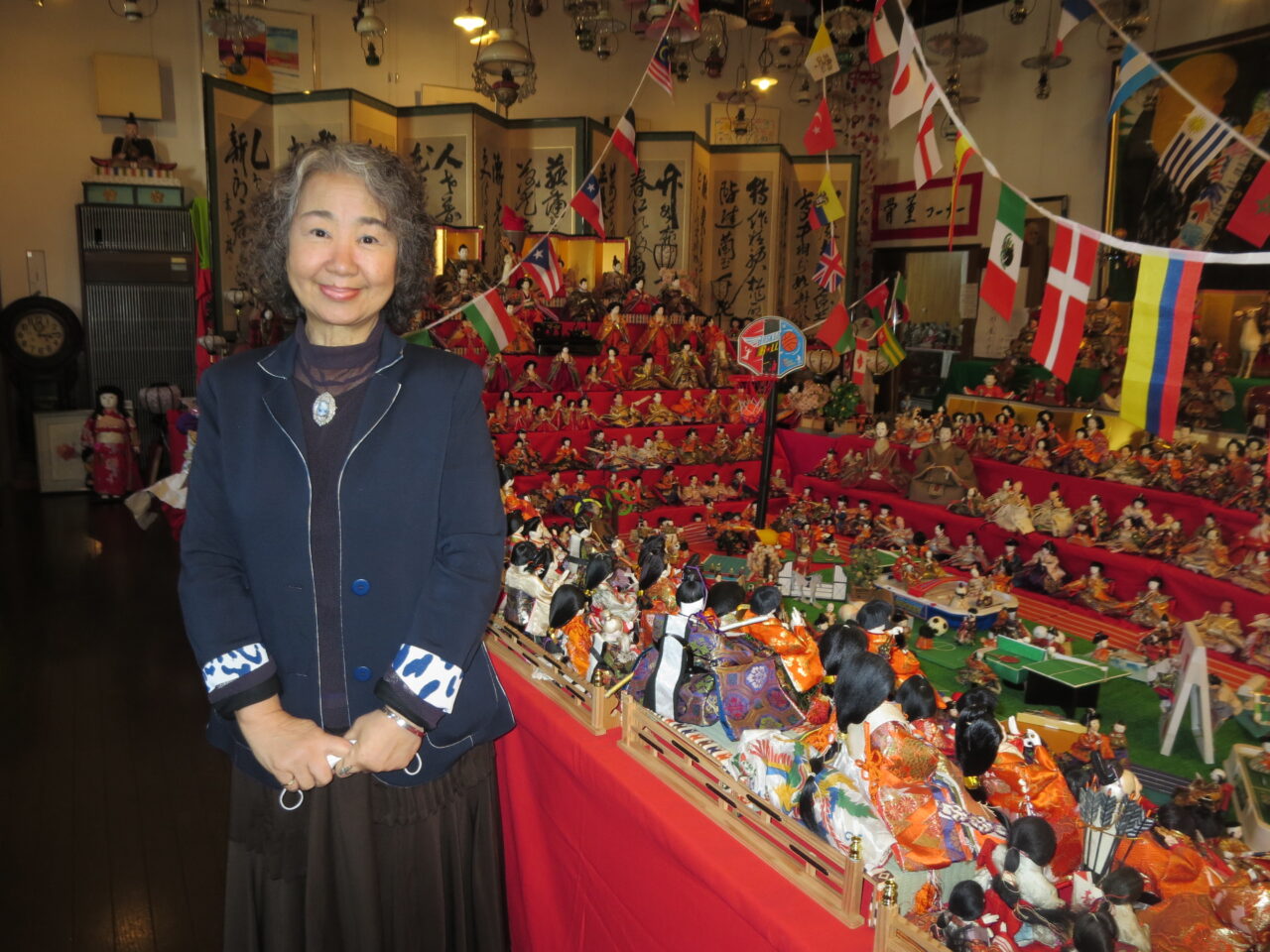
Mrs. Shigemori makes sure that her impressive collection is carefully preserved. Thanks to her we can still see these historic dolls in the present!
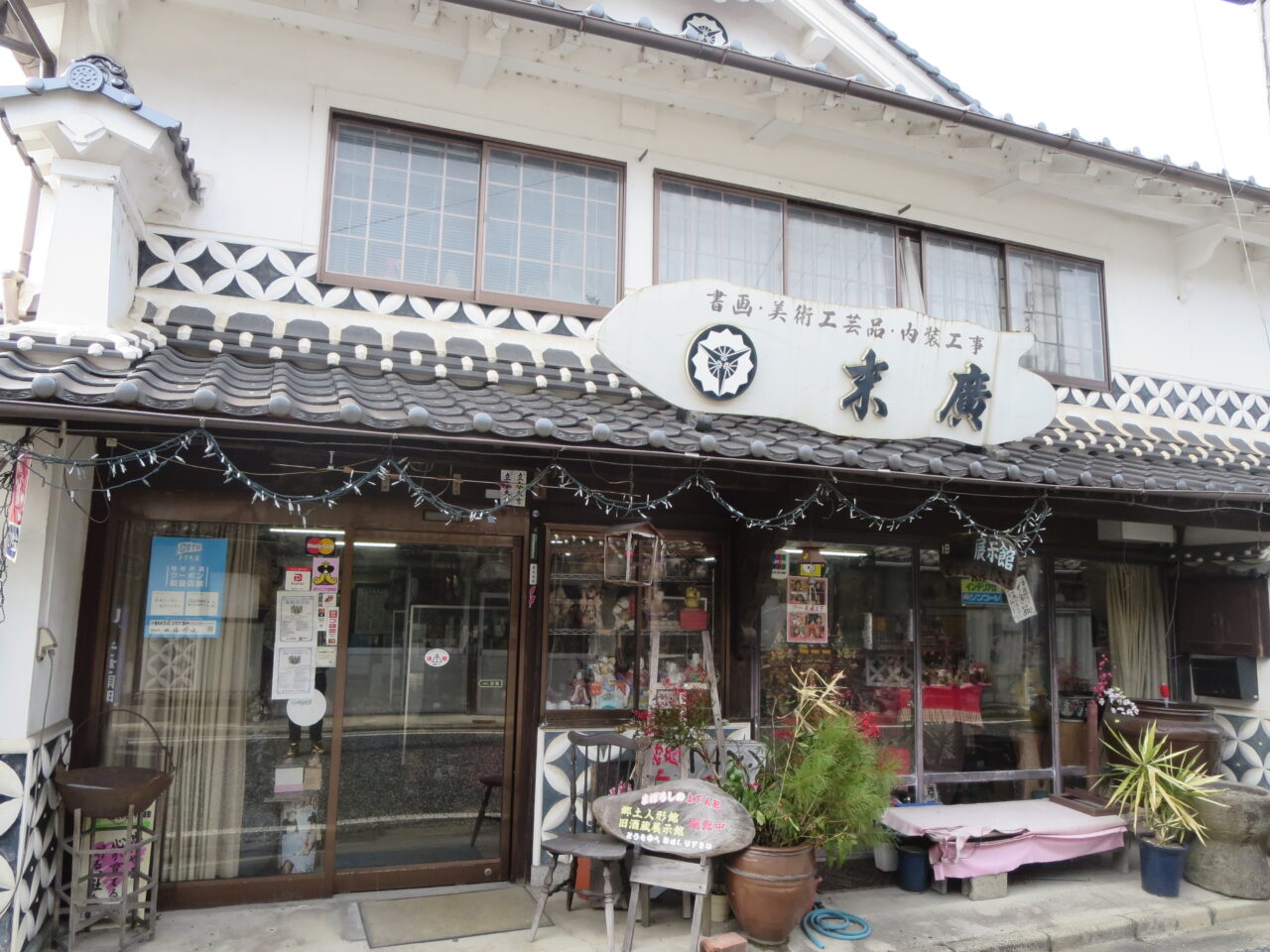
Next, we go to the Suehiro Sake Brewery Museum. Mrs. Tanabe, whose family used to run the brewery, gave us a look around.
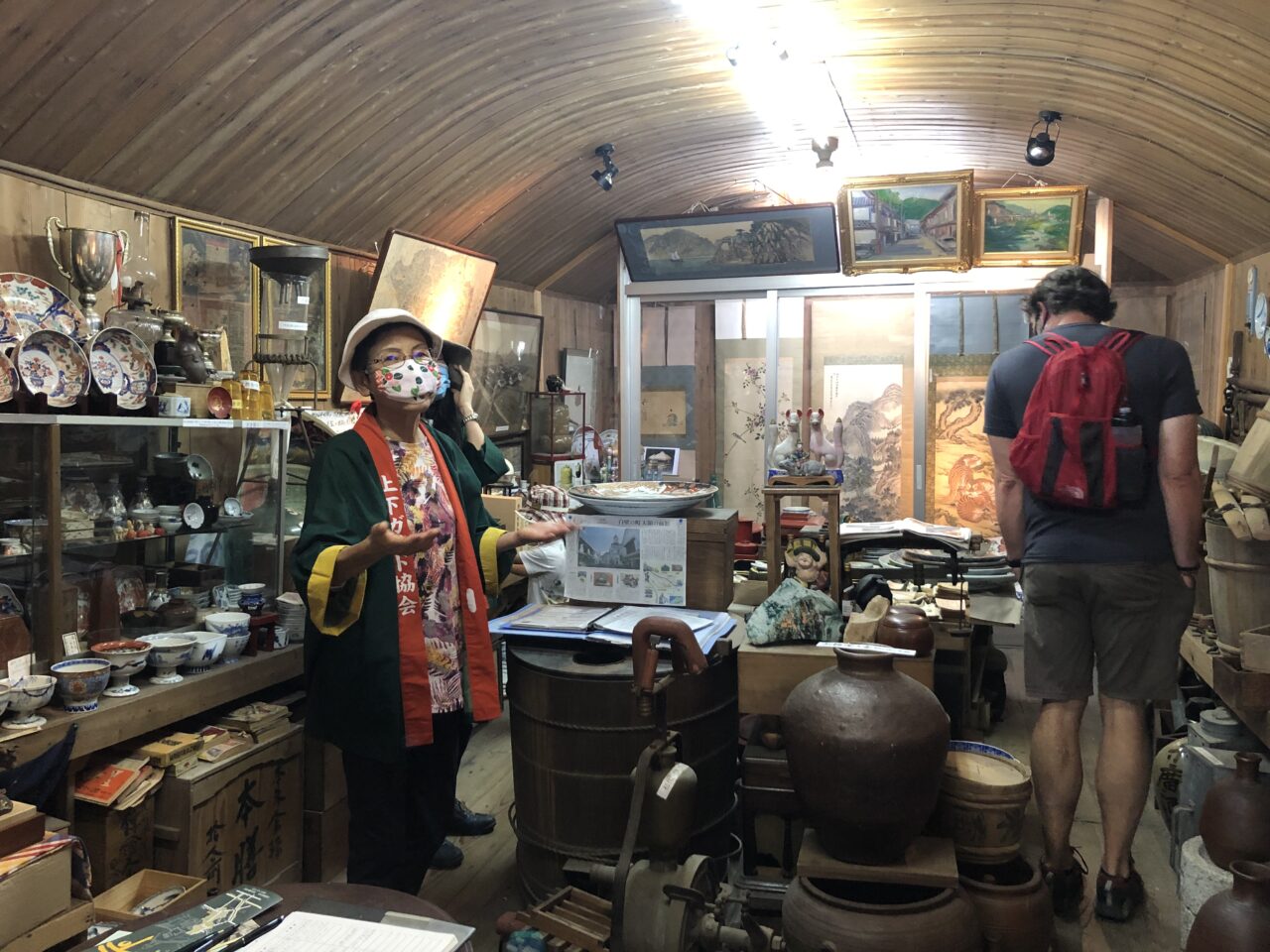
Repurposed into the present-day museum, the former brewery warehouse has a special arched ceiling and exhibits various historical tools for making sake.
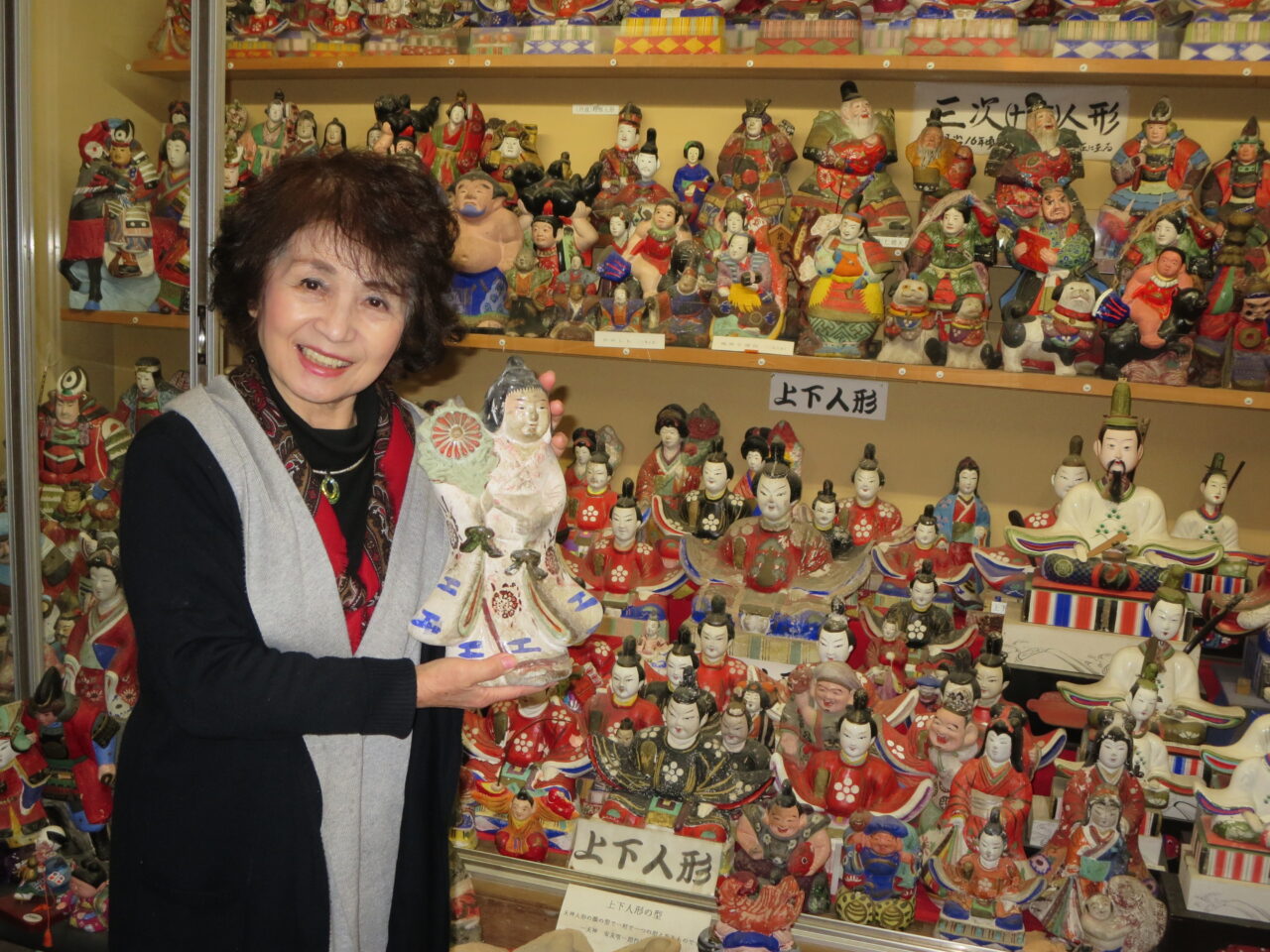
A separate warehouse on the brewery property houses rare, antique Hina dolls made in Joge, Miyoshi, and Mihara. The Joge dolls were modeled after the renowned Miyoshi dolls, which feature long faces and necks. Mrs. Tanabe has received these dolls over the years, preserving them carefully for tourists to see.
In the face of COVID19 restrictions, Mrs. Shigemori and Mrs. Tanabe continue to do their best to make the Hinamatsuri season special. Even though I wasn’t able to visit in person this year, I am glad that I can share their annual exhibitions with all of you. Until next time!

Mary Popeo has lived in Hiroshima Prefecture for four years, three of which she spent in Joge. She is passionate about sharing the magic of the Japanese countryside with people from around the world. Mary currently works at a peace education nonprofit in Hiroshima City, and collaborates with Fuchu City and the Joge Town to plan programs for inbound English-speaking tourists.
<日本語訳>
みなさん、こんにちは!メアリーです。これは、上下町に関する記事を書いた私のブログです。上下町は広島県北部にある小さな町で、日本の伝統的な生活、建築、おもてなしの魅力があふれています。上下町に関するブログを書くことで、多くの人がこの町を知り、愛してくれることを願っています。
春が来ると、日本ではひな祭りの季節です。「女の子の日」とも呼ばれるひな祭りは、女の子たちを祝い、健康と幸福を祈るため、毎年3月3日に開催されます。この日、日本の家族は、古代の宮廷を表現したひな人形を家に飾りつけます。
ひな祭りは2~3月までの1ヶ月間、ひな人形を展示したり、イベントを開催したり、伝統的なお祭りを楽しみます。平年、全国からたくさんの人が上下町に来られます。その期間中、上下町の人々は一年で最も忙しい時期を迎えます。2021年は、COVID19の影響により、お祭りは規模を縮小、地元の人々が独自にひな人形のコレクションを展示するという形で開催されます。
上下町のひな人形コレクションの中で「上下画廊」や「末広酒蔵博物館」は、歴史もとても古く、作りも精巧です。今月、私はは上下町を直接訪れることができなかったので、友人の助けを借りて、重森さんと末広さんの2つの施設のオーナーに、ひな人形のコレクションについてインタビューしました。
「上下画廊」は、上下町ののメインストリートにある魅力的なカフェ兼アンティークショップです。オーナーの重森さん(私の元英語学生の一人)は、とてもフレンドリーで、英語での物々交換が大変お好きな方です!写真は、去年の夏に私と友人で、重森さんを訪ねた時のものです。
ひな祭の期間中、「上下画廊」には2000個以上のひな人形が展示されています!今年、重森さんとお友達で、東京オリンピックの到来を祝うため、オリンピックをテーマにしたジオラマにひな人形を配置した、「オリンピック雛」を完成させました。ひな人形たちは、陸上競技、ボクシング、ボルダリング、ボッキア、などのたくさんの種目に挑戦しています!ジオラマの小道具はすべて重森さんたちが手作りされたものです。
また、「上下画廊」には江戸時代に作られたひな人形もたくさんあります。江戸時代は、ひな人形を所有できたのは一部の富裕層のみ。そのため、以後の時代のものよりも品質が高い作りとなっています。これらの人形は、十二単を身に着けており、顔も平安貴族のように瓜のような長い顔をしているのが特徴です。また、人形の中には、細かい綿で詰め込まれており、腐敗にも強いつくりとなっています。
明治以降、ひな人形は庶民の間にも広がりました。そのため、大量生産が行なわれるようになりました。また、江戸時代のひな人形とは異なり、十二単より庶民的な「着物」を着ていて、ふっくらした庶民的な顔をしています。中には、おがくずのような安価な素材を詰め込まれるようになりました。その結果、明治以降に作られた雛人形は壊れやすく、重森さんも展示や片付けの際は壊さないよう注意が必要とのことでした。
重森さんは、これらのコレクションは現代、そして未来に伝えなければならないと考えています。彼女たちのおかげで、私たちはこれらの歴史的なひな人形を実際に見ることができるのですね!
次は、「末広酒蔵博物館」へ。かつてご家族で醸造所を経営していた田辺さんがガイドしてくれました。
現在は博物館になっている旧醸造所の倉庫には、特別なアーチ型の天井があり、酒造りのための様々な古い道具が展示されています。
別の倉庫には、上下町、三次市、三原市で作られた珍しい人形も保管されています。上下人形は長い顔と首が特徴の現在でも有名な三次人形をモデルにして作られました。田辺夫人は長年にわたってこれらの人形を管理保管し、観光客のために今も大切に保存されています。
COVID19の制限に直面した重森さんと田辺さんは、上下町のひな祭りを盛り上げるため、これからも頑守り続けています。今年は直接訪れることができなかったのですが、毎年恒例のお祭りをここで皆さんと共有できることをうれしく思います。
それではまた次のブログでお会いしましょう。
メアリー・ポペオ
広島県在住歴4年、そのうちの3年間を上下町で過ごす。来日した海外の人たちと広島県の田舎の魅力を共有することが願い。現在は広島市内で非営利の平和教育団体で働いており、府中市や上下町とも協力しながら英語圏からの旅行者の受け入れなどの企画をしています。

